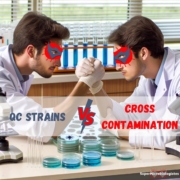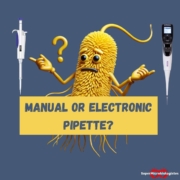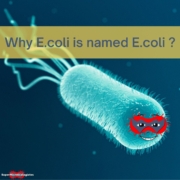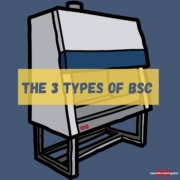Food Microbiology: How to limit cross-contamination caused by QC strains?
ISO 11133 and ISO 7218 standards require food microbiology laboratories to use QC (Quality Control) strains. This poses problems for the microbiology laboratory, notably due to the risk of cross-contamination.
Following a call to the SuperMicrobiologists community to address this topic, Cécile Vadier immediately raised her… inoculation loop. We therefore went to interview her.
Cécile was responsible for the QC microbiology laboratory of Barry Callebaut in Louviers, in France, for about 12 years. She has been a Corporate Microbiologist at Barry Callebaut for 6 years. She is in charge of writing microbiological methods for the group… among many other things !
For chocolate lovers, Barry Callebaut is the world leader in the manufacture of cocoa and chocolate-based products.
Best QC strains
Food & Water : The best QC Strain suppliers
We polled the SuperMicrobiologists.
Here are their favorite QC Strains
The use of QC strains in a microbiological food lab
Cécile, can you tell us how many microbiology laboratories you have at Barry Callebaut?
We have 29 microbiology laboratories. Among them, 23 run pathogen testing. These microbiology labs are present on all 5 continents.
For what types of analysis do you use microbial QC strains in your laboratories?
We use our QC strains for three types of analysis:
- For performance tests of the culture media, as indicated in ISO standard 11133. However, this only applies to our laboratories that are under accreditation and our laboratories that prepare their own culture media.
- For method controls (verification of methods and routine checks).
- For the laboratory technician qualifications (validation of training and routine checks).
Can you explain in concrete terms what a method control is?
It’s a positive control, which allows us to verify that the method is working well.
Basically, we artificially contaminate a sample (at a low concentration <50 bacteria) and then subject it to all the stages of analysis; dilution, blending, incubation, and then detection method.
How often do you perform this control?
We have a minimum frequency required by our internal rules, but depending on local constraints, some labs do it more often.
And what strains do you use for this type of control?
This is precisely one of our problems. In chocolate, the pathogen we are looking for is Salmonella. Therefore, the target strain during method controls must necessarily remain within the Salmonella spp. genus.
However, the major risk remains cross-contamination between two samples inside the laboratory, originating from a positive sample.
And why is this a problem?
The risk of contamination from the lab cultures to the production plant is largely anticipated by adequate isolation of the lab through buildings and walls, as well as by personnel circulation rules.
However, the major risk remains the cross-contamination between two samples inside the laboratory, originating from a positive sample.
Tracing and comparing the strains to conclude on the origin of the positive result (cause analyses are carried out in parallel in the lab and the plant) takes time, and the consequences on the activity of the plant and our customers have a huge impact, with financial costs skyrocketing.
Microbial QC practices: Strategy against cross-contamination
Do you often have this kind of cross-contamination in the lab?
It happens less and less, fortunately. We are working on the continuous improvement of our labs, and share lessons from each event across all our sites to limit the same problems at different locations. Standardization is not easy, especially in labs around the world! Before, I found it difficult to manage a lab with suppliers 500 km away. Imagine when they are on another continent…
How do you limit these false positives?
Our laboratories must use control strains that have a specific serotype never found in food matrices, like the serovars Tranoroa or Nottingham.
They are also asked to always have non-expired serological serums corresponding to the control strains they use. This way, we can quickly orient towards one of two hypotheses: lab origin or plant origin. This allows the crisis management teams to focus very quickly on the real root causes and speeds up the resolution of the problem. In the event of cross-contamination, the impact on the plant’s activity (and that of our clients) is much less significant!
The preference is very clear: ready-to-use strains with a low inoculation rate… In the Louviers laboratory, in France, we use the Lenticule format (from Merck).
Do you use ready-to-use QC strains or do you calibrate them yourself?
The preference is very clear: ready-to-use strains with a low inoculation rate. But unfortunately (subliminal message to suppliers!), this is not accessible everywhere in the world.
Ready-to-use strains limit the microbial manipulations. The less we manipulate the strains, the more we reduce the risk of cross-contamination!
In the Louviers laboratory, in France, we use the Lenticule format (from Merck). The Nottingham serotype is available in low concentration, the format is easy to use, and the price remains affordable for a food laboratory. However, we have no choice other than Nottingham and sometimes the strain is not even available.
There are fluorescent QC strains (which makes them easy to recognize). Have you tried them?
I know them very well and indeed this format is particularly interesting for us, and I am currently working on this subject.
It should be noted that these strains are recognized as GMOs and that some national legislations, including France, are very strict on this subject. We necessarily need the supplier’s help to obtain the permits for importation and authorization for use in the country.
If you could describe your ideal QC strain, what characteristics should it have?
In my dreams, the perfect QC microbial strain would have to be :
- Calibrated at low concentration (for a spiking <50 microorganisms).
- Easy to identify, either with serovars not found in food products, or with “fluorescent” tag.
- Available in all the countries where Barry-Callebaut is established.
- At a price acceptable for the food industry.
Suppliers can contact me if they need more information.
Thank you, Cécile Vadier!
Like Cécile, come and share your experience with us. Contact us!













Leave a Reply
Want to join the discussion?Feel free to contribute!